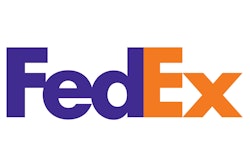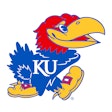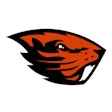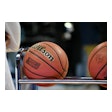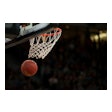
As a Boston College graduate student in 2017, Jerry Logan traveled to Indianapolis to research his chosen dissertation topic — how Butler University, a school of 4,500 students, leveraged its success in the NCAA men's basketball tournament in the years following the Bulldogs' back-to-back championship game appearances in 2010 and 2011. Now the director of academic operations at Division III Gordon College in Wenham, Mass., where he played basketball as an undergraduate from 2003 to '07, Logan has coauthored (with Butler executive director of principal gifts Graham Honaker) The Cinderella Strategy: The Game Plan Behind Butler University's Rise to Prominence, a book released this March on the eve of the 2021 tournament. AB senior editor Paul Steinbach spoke to Logan in the middle of this year's madness to help make sense of strategic synergies between institutions and their teams.
Why Butler?
I found their story — the back-to-back Final Fours — to be one of the most recent and compelling instances of the phenomenon I was trying to look at, and so that's why I settled on Butler.
Can you put the phenomenon into words?
I think that March Madness provides many universities with an unparalleled opportunity in terms of attention. Granted, they have to do the difficult work of making the tournament and then winning some games, but if they do that — just in terms of the name recognition and the sudden, almost blinding infusion of attention they get — it's a real opportunity for a university to capitalize in the aftermath. I wanted to take a university that had experienced this glare, this spotlight, in the extreme and then see in the decade after it how they leveraged the opportunity to transcend on-court results and benefit all sorts of different functions across campus.
And your co-author was on campus by the time you visited.
Correct. Graham started working at Butler right after the second Final Four run and was one of the people I interviewed when I was doing work on my dissertation. Unbeknownst to me, he had also been writing, because when he landed at Butler he thought, "Wow, this is kind of wild. I'm seeing stuff that doesn't seem possible, but the campus is growing around me. Butler is transforming before my eyes. I want to start recording it." We had kind of been writing toward each other without knowing it until we met and I interviewed him.
In some ways, Graham personifies the impact that those Final Four appearances had, in that he sought a job at Butler as a direct result of that on-court success.
That's right. One of the things I found in talking to people, and one of the things that Graham can really back up from being an insider, when you go into the literature and start to analyze the effects of these runs, you hear a lot of about admissions applications. That's, I think, the thing that gets a lot of eyeballs nationally. And then you hear about increased opportunities with donors, but that can be a little bit more difficult to prove. You hear about branding and marketing and all that — the earned media attention. But you don't hear a lot about faculty and staff recruitment, and at Butler, in particular, there are multiple people who say, "I heard about Butler because of basketball," or, "I was drawn to their story because of basketball." There's a dean of education — dean emeritus now — her name is Ena Shelley, and she said it was a tremendous boost for them recruitment-wise with faculty — just getting on their radar in terms of name recognition. Getting people to pay attention. Graham was very much a product of that experience. He was — he is — a hoops junkie, as he calls himself. He was an easy convert, being a basketball fan, but that's how he found his way to Butler. Yep.
And he's in development there.
He's on the fundraising side for the university, but one of the things that Butler has done really well is make really tight connections between the university advancement staff and the athletics advancement staff. His first big project was the campaign for Hinkle Fieldhouse. Right after the first Final Four, they launched it, and it took up several years after that.
What themes or conclusions should readers of the book take away from it?
The biggest theme, I think, because there a lot of universities pursuing this strategy — hoping to get a little luck come March, in large part, because football is so expensive, it's so hard to break through that ceiling and into the upper echelon where you're a dominant program and competing in the post-season — is that basketball is just much easier. I know of a number of schools — mid-majors, universities that don't have much name recognition outside their region — who have said, "Okay, this is our meal ticket." And I think the thing that is most important about Butler's story is that the attention and the opportunities that you get from a Cinderella run are a catalyst for what you're already doing. I would argue that it's hard to start something new, but what it does is speed up the things that you're already doing and energize your staff and community to pursue those things more boldly. I really think it's best to talk about it in terms of a catalyst, a catalytic effect of what you're already doing on the ground. That's what it was for Butler. They say, "The infrastructure growth, the admissions growth, the fundraising explosion — we were heading in those directions and we might have been able to do it over a longer term, but I can't fathom doing it in just a 10-year period, like we have, without basketball." So, it's really getting the opportunity to speed up, if you imagine it well, all those existing initiatives and strategic directions.
What forms does the strategy take? Paying a basketball coach what he wants in the hopes of one day making a tournament run? Does it start with investing in a coach?
Great question. For Butler — and one of the things we try to do in the book is tell the whole story — this just didn't happen overnight. Everybody there says it started in 1989. That's when Butler got a new president. His name was Geoff Bannister. He essentially said, "Hey, we've got a good product on the ground here, but nobody outside of Indianapolis knows us. It's going to be really hard for us to survive unless people know about what's going on here." This is especially true nowadays where you need more of a national footprint to attract people to your community. So, the strategy for him was capitalizing on what was in the back yard, which was Indiana as a basketball state — people understand and speak that language. And then they had Hinkle Fieldhouse sitting on the campus already. They had assets there. What it was, as you suggested, was an initial investment, but a modest one, to update some facilities. To expand the recruiting budget, by no means huge, but just enough to get them to be competitive. And then hiring Barry Collier as head coach — he's now Butler's athletic director — and giving him the space to figure out the on-court thing, which is to say you have to start winning some games. It took Butler some time to start making the tournament. But that was the initial strategy: "Basketball makes sense for us to invest in if we're trying to gain more attention outside of our immediate region."
Did they have to loosen the purse strings to get to the Brad Stevens era as head coach and ultimately to that next level?
Not initially — at all. Brad Stevens was by no means an obvious choice. He was 30 years old. He was not even the lead assistant or the second assistant. He was third down the bench. But he was hired because he fit culturally. And Barry Collier, Butler folks will tell you, just has a genius for hiring. There's no search committee. It's just him. He tabs the next head coach, and has just a remarkable track record — in part because Brad Stevens was his first hire, which turned out to be a home run. But at the time, Brad Stevens had no head coaching experience. He was an assistant at Butler. That was all he had. But they saw something in him that was obviously more than anyone could have imagined in terms of his ability. Once they made that Final Four run, they did have to pay more to keep him there, initially. But after the second one, one of the stories we tell in the book, is they thought they would again have to fend off a bunch of suitors, and so they went to Brad and said, "Okay, what are you thinking?" And he came back with a weird figure. This is a story that John Hargrove, who was then chairman of the board, told us. They said, "What's this weird number? Where is this coming from?" It was money for assistant coaches — none for him. He said, "Hey, if we want to sustain this, we have to pay our assistants better." There was definitely the element, the dynamic, that you have to try to retain your coach and that involves a financial outlay, for sure, but there was also a uniqueness to him and what he valued that made it a little different than some of the negotiations I think you see at other institutions. When they lost Brad Stevens to the Boston Celtics, normally that's the kind of thing that would end this run for a program and for a university, but it hasn't for Butler. And that's because they've been really smart about hiring for the head coaching position. And they've done it by hiring insiders, so former players and assistants and current assistants.
In the book, you mention how other schools contacted Butler and Gonzaga about how they managed collaboration between the university and athletics. How did they do it?
I think there are two pieces. The first, we were interviewing a trustee at Butler and after the interview was done, she looked at us and said, "The story is the culture." They have an organizational culture that really permeates the entire institution — that athletics and academics are not at odds as they are at so many other places, but that they feel like they are a piece of the same thing. That's particularly true at Butler and it was true long before this run. The thing they've done better than anything else is to make decisions with culture in mind first, and I think that's the key distinction point. In terms of strategy, I think the one thing that really stands out from both of Butler and Gonzaga is that there's a point of continuity. For Gonzaga, they've had the same coach and AD for decades. Mike Roth is the AD and Mark Few is men's basketball head coach. At Butler, that point of continuity is Barry Collier, who was first the coach and then came back as athletic director. And I think it's really hard to maintain a long-term run like those two schools have unless you have almost a gate-keeper — a watcher — who's ensuring that you're making the right decisions as you grow, that you're not getting too big for your britches, that you're sticking to that cultural commitment that you've established and that your players, especially, are fitting that culture. If you look at other schools where they've had Cinderella runs but have kind of faded from view, those points of continuity tended to head to other institutions and the project kind of crumbled after that.
Is the phenomenon more conducive to basketball? You look at two football teams on paper and the stronger, deeper, more experienced team is probably going to win. Upsets are not common. Basketball has the potential for a hot hand to carry a team with a 35-point performance and stun just about anyone in the country. The other dynamic is the tournament, and the College Football Playoff can't come close to the interest generated by the three weeks in March and the ubiquitous office pools. Does all of that make these types of Cinderella strategies a truly basketball-centric story?
That's kind of our argument. If you go back and look at past examples, a lot of them are football-based. Notre Dame is the classic one that's kind of realized the dream of using athletics to help build and grow an institution that's academically excellent and stands alone. Even though athletics remains a big part of that community, the academic institution can very much stand on its own. One of the things we're arguing, just for those reasons you've listed, is that basketball's a much better bet. It's still expensive, but much cheaper than football. The field itself is more wide open. Even if you play in a terrible conference, somebody's going to the tournament every year. Because of the nature of the automatic bids, you just have those opportunities year after year after year. So, it's a much more level playing field. And like you said, the nature of the sport itself means one hot hand and all of a sudden, you're the talk of the country. March Madness is a unique leverage point because of the attention, but it's also a real dead zone in the sports calendar. When those weeks in March hit, there's really nothing else going on, so it does tend to dominate. And this is pure speculation, but as more and more states legalize gambling, I think the attention to March is only going to grow, because it's already a known — people flock to Vegas in March, those office pools you were mentioning. So, I just think the attention is not going anywhere, nor is our love for the Cinderella story. And one of the things we think is kind of critical is winning two games, because that gets you out of the first weekend and extends that media cycle, and now you can really start to tell your story. People are curious, they're digging into Google, they're on social media and they're trying to find out more about you. That's the real sweet spot for an institution to be able to say, "Here's who we are, and here's what we do," and build that name recognition.
Can a school benefit from only one victory in the tournament? The president of Abilene Christian estimated that the its first-round victory over Texas was worth $120 million to the university. Is that on the money or far-fetched?
There are different ways you can pursue the question, but I think that's on the money. He was talking about the earned media, which is all the extra exposure in advertisement and marketing that they got without having to pay a dollar. They had already invested in men's basketball, and so this additional attention they got from all the platforms they were on — valued at $120 million — that kind of squares. Butler, after their two Final Four runs, had an external firm called Borshoff Media try to come up with an estimate for the amount of earned media attention that the two Cinderella runs won for Butler. And they put it at $1.2 billion. I don't know what the proportion would be, but when I saw that number from Abilene Christian, I didn't really bat an eye. That's what the folks at Butler heard, and they acknowledge it's a fuzzy number — I mean, there are some things you're trying to measure that are really hard to measure. But I think the big takeaway for me is it's a big number, either way. Even if Abilene Christian was $50 million off, it's still $70 million. So, it's indicative not of exact accuracy but certainly of the amount of attention that you're getting that you otherwise wouldn't have, just because that orange ball bounced the right way a couple times.
Oral Roberts upset Ohio State, then Florida, before losing to Arkansas by two points. Does the biggest impact come from that first win, and the returns sort of diminish from there, or does the impact in fact keep piling on?
Good question. I think it keeps piling on because it lengthens that exposure, that timeline for people to dig in and find out more about the story. For instance, when Butler played Duke in the 2010 national championship, they got really lucky in a lot of ways. They matched up with Duke, which is a school that has an academic reputation, and so there were a lot of stories about how Butler had more Academic All-Americans than Duke, and that was really valuable for Butler, you know? Also, they got so lucky because the national championship game was in Indianapolis, so their students — this is a story that lives on to this day as kind of emblematic of the university — their student-athletes went to class the morning of the national championship game. That only happens because you're so lucky that it's in Indianapolis the year you happen to end up in the national championship. I give that background to say that because they stuck around for so long, The New York Times did a story where the two presidents are in an office talking before the day of the game, and Butler's president at the time, his name was Bobby Fong, was really smart about using those opportunities. So, it's an article about basketball. It's an article in which you're going to be mentioned in the same breath with Duke, and he uses it to talk about, for instance, Butler's dance program, which has long had a wonderful reputation but was just not well-known outside the area. Those opportunities pile up the longer that you stay in the tournament. Earlier in the tournament, there's still more noise. This year, Oral Roberts was around, but so was Loyola, so half the articles I saw were talking about Loyola, while the other half were talking about Oral Roberts. The more you stick around, the more you're the only show in town — if you're the Cinderella.
Speaking of Loyola, it upset Illinois, a number-one seed. Abilene Christian knocked off Texas. Is impact enhanced if a tournament victory comes over an in-state institution?
I think that matters. Again, it's luck of the draw, but — right or not — when schools are successful in athletics, we as spectators think it reflects well of the whole institution. We think it's a thriving place. When you play on the same stage as Texas and you're Abilene Christian and you beat them, and the result is really clear to everybody — we understand that 53 is more than 52 — so today Abilene was better than UT. And evidence suggests that we kind of transfer that over to the institution and think, "Okay, well, maybe Abilene, as an institution, can play on the big stage, too." So, I do think that matters. I think it matters even more concretely in terms of sustaining the success of the program. Loyola recruiting in-state, in Illinois — there's lots of talent there — and you're trying to say, "How do we sustain this?" Well, first of all, you have to keep winning basketball games. The program has to stay good. To score that type of victory, I think the biggest win is in the recruiting and the continued success of the basketball program.
Can a school catch lightning in a bottle — go to back-to-back Final Fours — and then coast, or does it need to sustain that success to keep the institution on the map?
Another really good question. I think both are true. For instance, George Mason has not had the same on-court success that they had back in 2006 when they made that Final Four run. Their coach, Jim Larranaga, left afterwards. But I still think that that event matters deeply in institutional history. It used to be on their website a good bit, even though it was well passed, saying, "Hey, this was a huge moment for us." People at Butler would say you have to keep winning games, and they've managed to do that. And people would say the move to the Big East, and continuing to compete in the Big East, was more important than the Final Fours, because it has a much more lasting impact. And that's one of the take-aways from the book — you have to take this energy and transfer it to things that last over time. And where Butler did that really well is to move into the Big East, which opened up all sorts of markets on the East Coast for them. Year after year, they started to recruit both prospective students and donors and all sorts of people from those communities that previously weren't open to them. But they've also transferred it to things like their live mascot program — they've just been genius with that. And it's a lot easier to sustain a live mascot program — you just get another bulldog — than it is to win basketball games. It really helps when you keep winning basketball games, but if you can find ways to transfer that energy into more lasting parts of your campus, that's the real trick.
Does a live mascot program really impact an institution's reputation?
The guy who really took the live mascot program into a different stratosphere was a guy named Michael Kaltenmark. One thing that Butler did was to start having the live mascot deliver admissions acceptance letters. If there were prospective students in D.C., and Butler was going to play Georgetown, Butler Blue III, the live mascot at the time, would go with them and go to doors or schools and give acceptance letters to these students. And they found that his success rate closing the deal was two or three times better than their average yield rate. The president at one point said, "Can we get 10 more of these dogs?" The mascot absolutely gained popularity because of the Final Four runs, but they were able to leverage that through marketing and admissions. I was talking to the VP of enrollment and she said, "We just realized that anything with the Bulldog on it, any email we send, the open rate is much higher than anything else. I said, 'Well, why don't we just send the Bulldog on everything?' " So, they really have been able to kind of give that mascot a personality and to capitalize on it in all sorts of different ways. The mascot owns a tuxedo, because alums want him to come to events. The live mascot is one of those hidden things. It's not the first thing you'd think of when you think of Butler, but that is where they have found some enormous success. There have been articles in The Wall Street Journal and The New York Times about the live mascot. Go figure. It's not like you'd expect to get the coverage, but they tapped into something.
Is there an opposite to the Cinderella dynamic? When Duke and Kentucky miss the tournament field entirely, does that dull the sheen of their institutional reputations in any measurable way?
I think it has to be said, and this is my perspective — for better and worse, big-time athletics is a thing that most universities are committed to in this country. The leadership has inherited this thing, and it's big and people really care about it, and so you might as well try to make something of it. But it's expensive and it has lots of danger. It's high-risk, and I think the biggest risk is actual scandal or impropriety. I think that's the biggest risk you run. At the same time, I really feel — in a weird way — for those programs that miss the tournament one year and it's like the sky is falling. That's a hard dynamic, but I don't know that the sheen rubs off the institution so much. Here's a funny story, actually. I was with some Butler people and I was talking about the very first national championship run where Gordon Hayward shoots a half-court shot and it's inches away from going in and Butler winning the national championship over Duke. I asked them, "Hey, do you think you're better off because that shot missed?" They looked at me like I was crazy. They said, "No way! Of course, we want to win. We want to win the whole thing." But my point was that as soon as you lose that underdog status, as soon as you climb the mountain — and I'll be really curious to watch if this happens with Gonzaga this year — something changes once you get the national championship notch in the belt. Butler's been able to hang onto this underdog persona because they never quite got over the top, and I think that's been really valuable to them, because you keep fighting. Otherwise, you kind of lose that uphill-battle, we're-all-in-this-together kind of sense.
Do you fill out a bracket?
Absolutely.
How are you doing?
Not well. But I root for chaos ever year. I'm tickled pink when I start making the red Xs on my bracket. If Butler had been in the field, because I've just kind fallen in love with the university, I would root for them over everyone else. But number two on the list is always, "Who's the lower seed? Who's Cinderella?" That's who I'm rooting for all the time. I'm always rooting for the true underdogs.
This article will be excerpted in the May 2021 issue of Athletic Business with the title "How Butler University leveraged basketball glory." Athletic Business is a free magazine for professionals in the athletic, fitness and recreation industry. Click here to subscribe.















